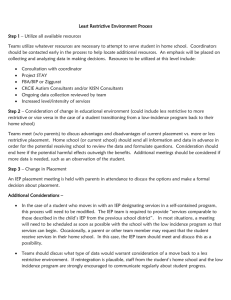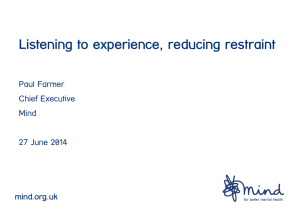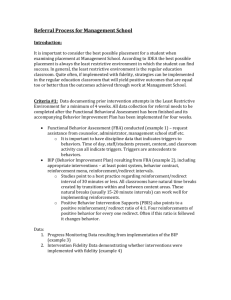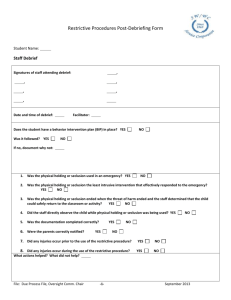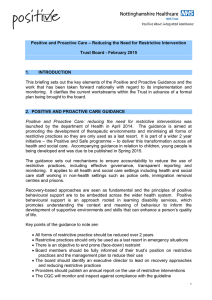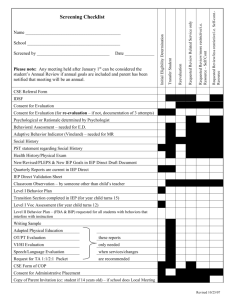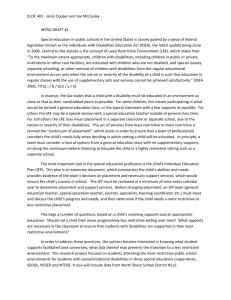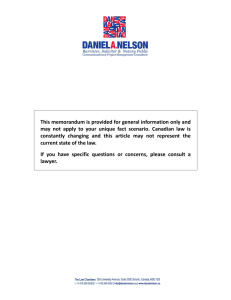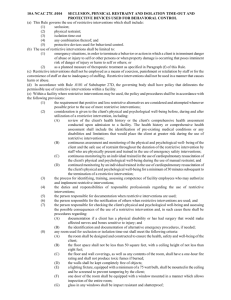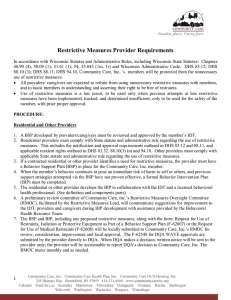Restrictive Procedures Q & A
advertisement
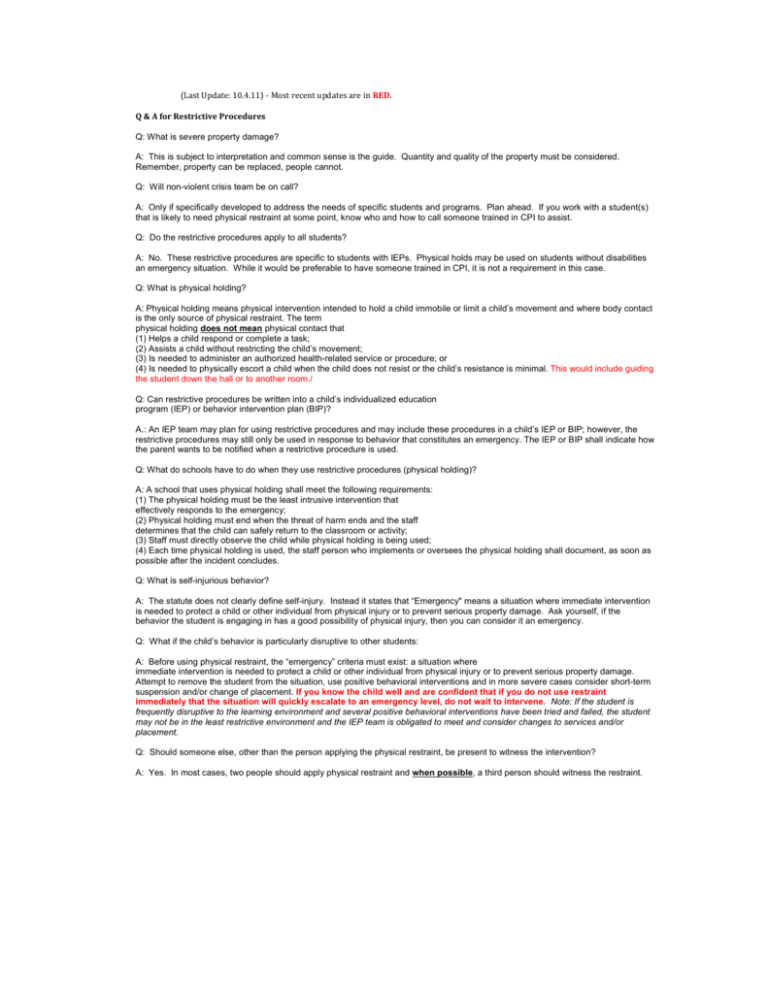
(Last Update: 10.4.11) - Most recent updates are in RED. Q & A for Restrictive Procedures Q: What is severe property damage? A: This is subject to interpretation and common sense is the guide. Quantity and quality of the property must be considered. Remember, property can be replaced, people cannot. Q: Will non-violent crisis team be on call? A: Only if specifically developed to address the needs of specific students and programs. Plan ahead. If you work with a student(s) that is likely to need physical restraint at some point, know who and how to call someone trained in CPI to assist. Q: Do the restrictive procedures apply to all students? A: No. These restrictive procedures are specific to students with IEPs. Physical holds may be used on students without disabilities an emergency situation. While it would be preferable to have someone trained in CPI, it is not a requirement in this case. Q: What is physical holding? A: Physical holding means physical intervention intended to hold a child immobile or limit a child’s movement and where body contact is the only source of physical restraint. The term physical holding does not mean physical contact that (1) Helps a child respond or complete a task; (2) Assists a child without restricting the child’s movement; (3) Is needed to administer an authorized health-related service or procedure; or (4) Is needed to physically escort a child when the child does not resist or the child’s resistance is minimal. This would include guiding the student down the hall or to another room./ Q: Can restrictive procedures be written into a child’s individualized education program (IEP) or behavior intervention plan (BIP)? A.: An IEP team may plan for using restrictive procedures and may include these procedures in a child’s IEP or BIP; however, the restrictive procedures may still only be used in response to behavior that constitutes an emergency. The IEP or BIP shall indicate how the parent wants to be notified when a restrictive procedure is used. Q: What do schools have to do when they use restrictive procedures (physical holding)? A: A school that uses physical holding shall meet the following requirements: (1) The physical holding must be the least intrusive intervention that effectively responds to the emergency; (2) Physical holding must end when the threat of harm ends and the staff determines that the child can safely return to the classroom or activity; (3) Staff must directly observe the child while physical holding is being used; (4) Each time physical holding is used, the staff person who implements or oversees the physical holding shall document, as soon as possible after the incident concludes. Q: What is self-injurious behavior? A: The statute does not clearly define self-injury. Instead it states that “Emergency" means a situation where immediate intervention is needed to protect a child or other individual from physical injury or to prevent serious property damage. Ask yourself, if the behavior the student is engaging in has a good possibility of physical injury, then you can consider it an emergency. Q: What if the child’s behavior is particularly disruptive to other students: A: Before using physical restraint, the “emergency” criteria must exist: a situation where immediate intervention is needed to protect a child or other individual from physical injury or to prevent serious property damage. Attempt to remove the student from the situation, use positive behavioral interventions and in more severe cases consider short-term suspension and/or change of placement. If you know the child well and are confident that if you do not use restraint immediately that the situation will quickly escalate to an emergency level, do not wait to intervene. Note: If the student is frequently disruptive to the learning environment and several positive behavioral interventions have been tried and failed, the student may not be in the least restrictive environment and the IEP team is obligated to meet and consider changes to services and/or placement. Q: Should someone else, other than the person applying the physical restraint, be present to witness the intervention? A: Yes. In most cases, two people should apply physical restraint and when possible, a third person should witness the restraint.
